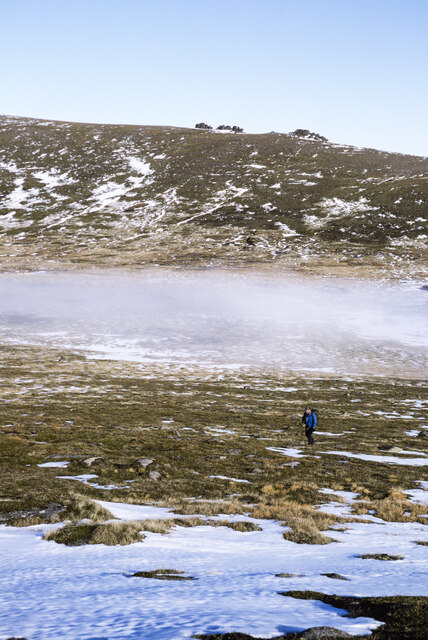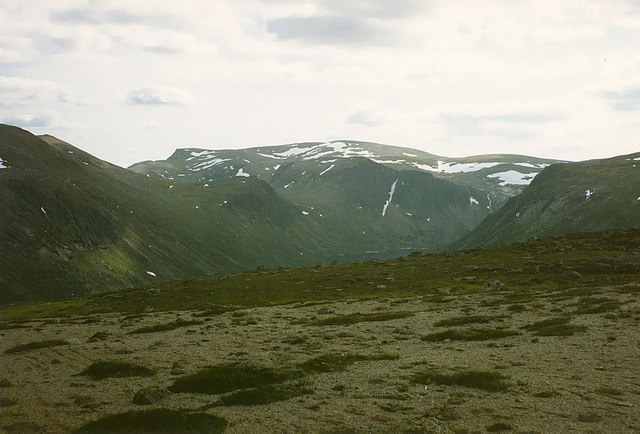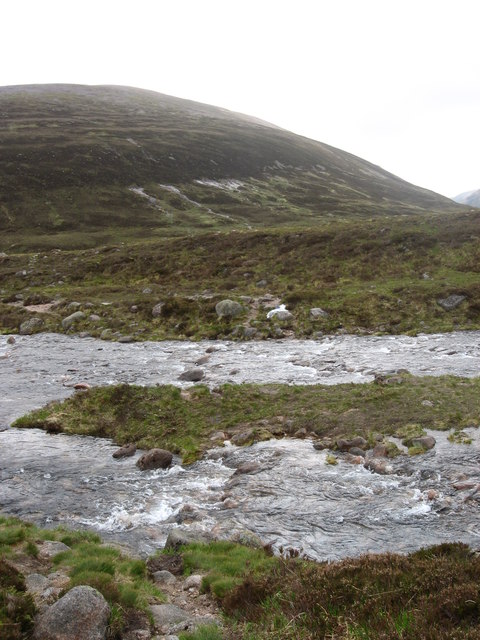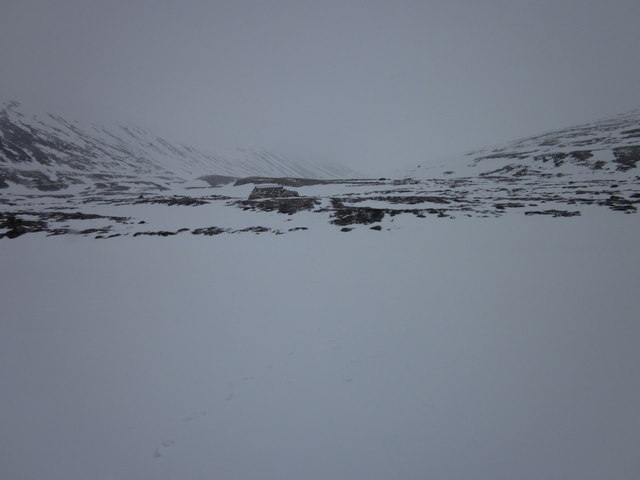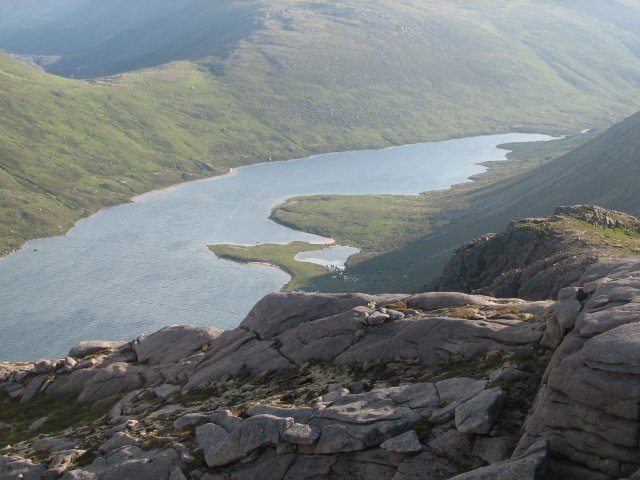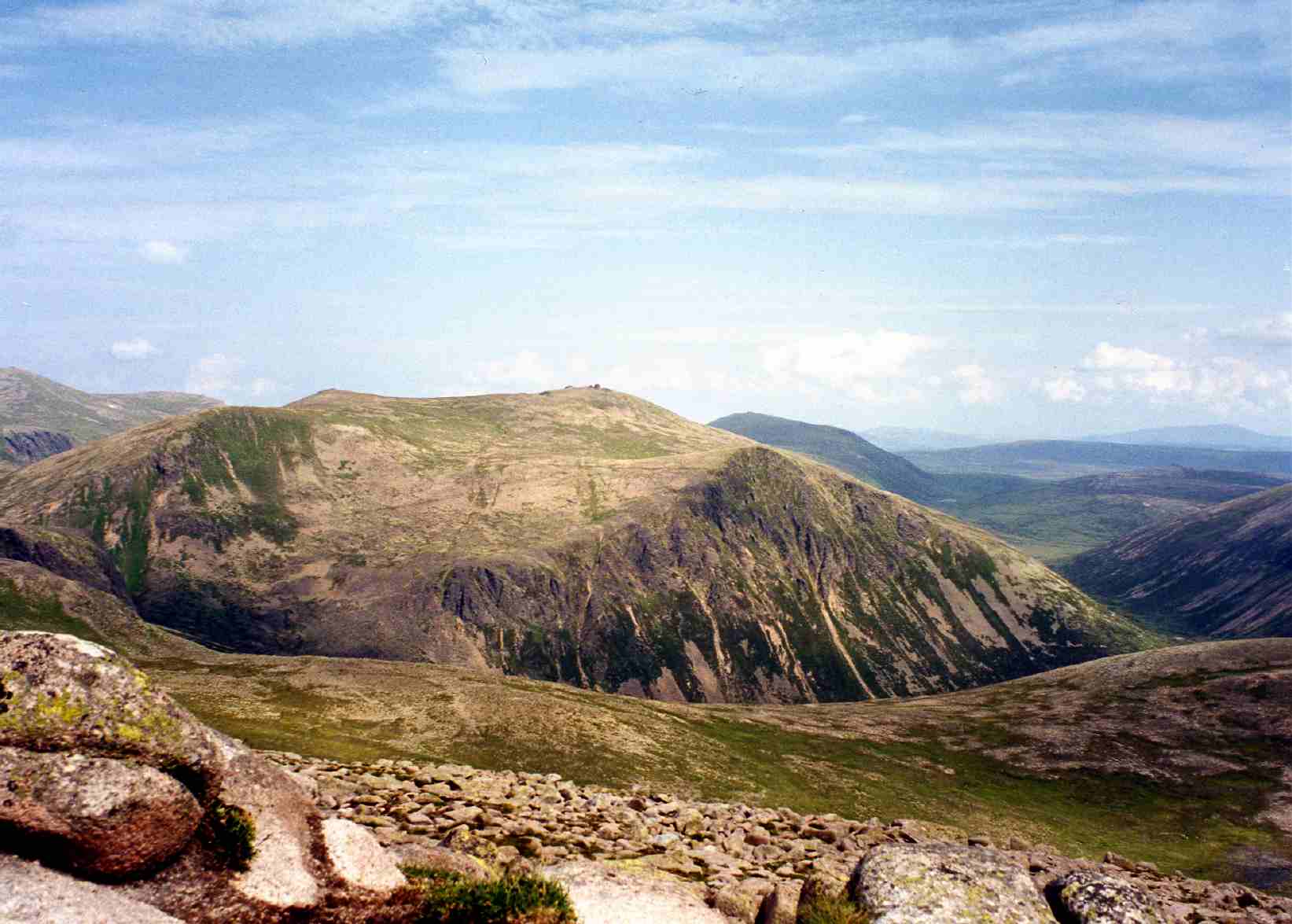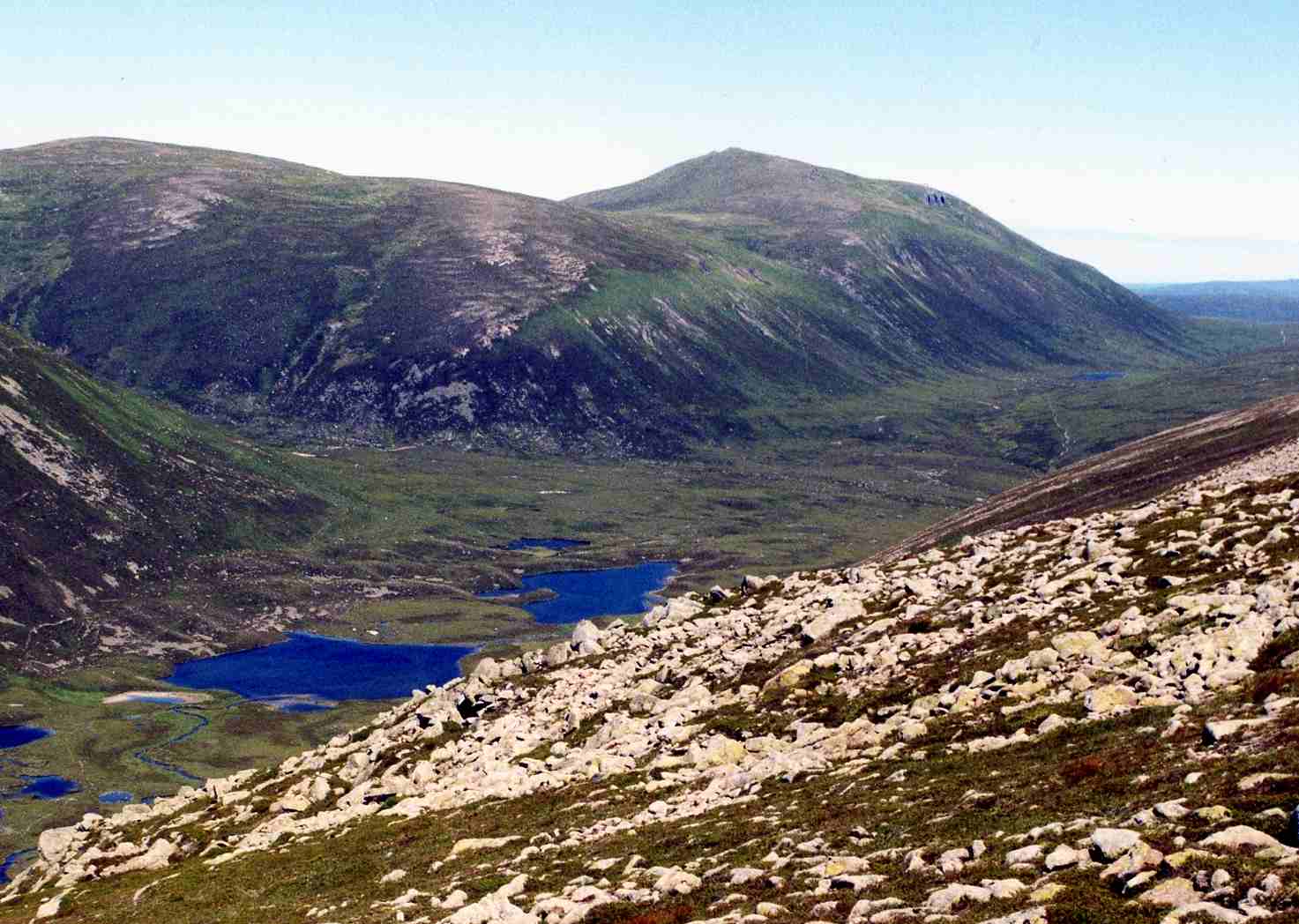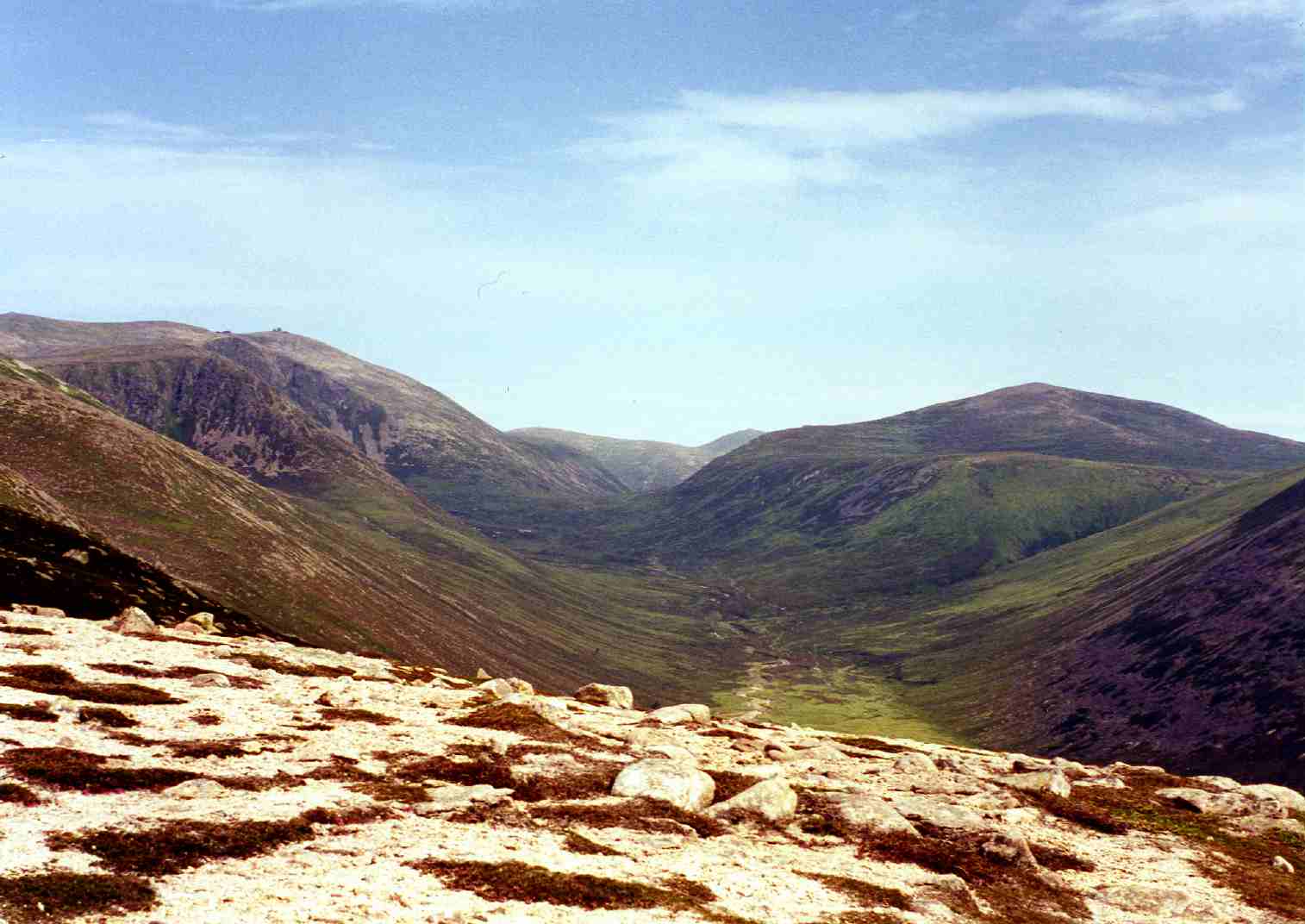Coire na Còinnich
Corrie (Glacial Valley) in Banffshire
Scotland
Coire na Còinnich

Coire na Còinnich is a picturesque glacial valley located in the region of Banffshire, Scotland. Nestled amidst the scenic Cairngorms National Park, this stunning corrie (or cirque) is a popular destination for nature enthusiasts and hikers alike.
The valley is situated on the eastern side of the Cairngorm Mountains, and its name translates to "Valley of the Moss" in Gaelic. It is characterized by its steep, U-shaped walls, which were carved out by glaciers during the last Ice Age. The rugged terrain and dramatic landscape make it a captivating sight for visitors.
Coire na Còinnich is home to a variety of flora and fauna, including mountain hares, ptarmigans, and rare alpine plants. The valley is also traversed by a crystal-clear stream, which adds to its natural beauty.
Hikers can explore the corrie by following well-marked trails that lead up the valley and offer breathtaking views of the surrounding peaks. One of the most popular routes is the path that ascends to the summit of Cairn Gorm, the sixth highest mountain in Scotland. From the top, visitors can enjoy panoramic vistas of the corrie and its surrounding area.
Due to its remote location and rugged terrain, Coire na Còinnich is best suited for experienced hikers and those with a good level of fitness. It is advisable to check weather conditions and be prepared with appropriate clothing and equipment before embarking on a hike in this area.
Overall, Coire na Còinnich is a stunning glacial valley that offers a true taste of the Scottish Highlands. Its breathtaking scenery and challenging trails make it a must-visit destination for outdoor enthusiasts and nature lovers.
If you have any feedback on the listing, please let us know in the comments section below.
Coire na Còinnich Images
Images are sourced within 2km of 57.115416/-3.5969237 or Grid Reference NJ0303. Thanks to Geograph Open Source API. All images are credited.

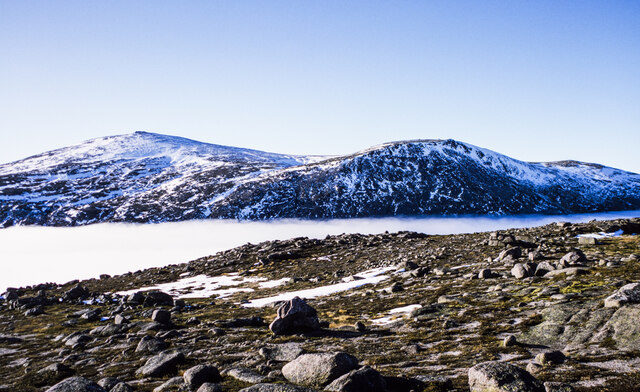
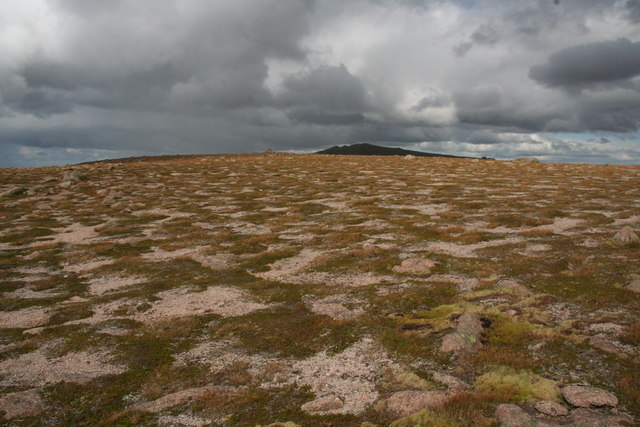
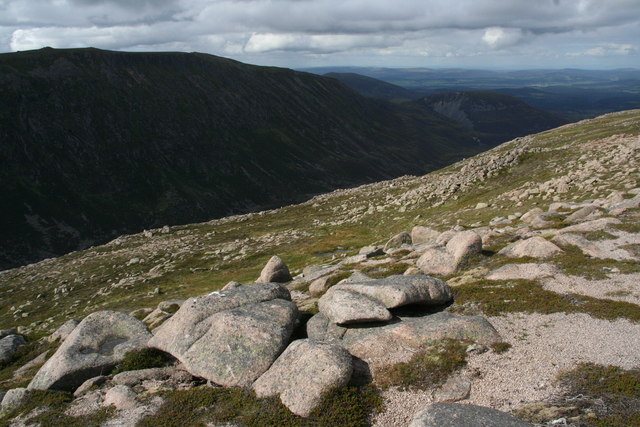
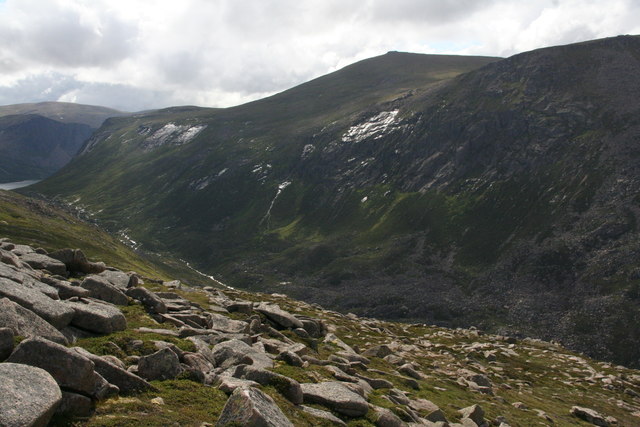
Coire na Còinnich is located at Grid Ref: NJ0303 (Lat: 57.115416, Lng: -3.5969237)
Unitary Authority: Moray
Police Authority: North East
What 3 Words
///sprayer.mountains.bills. Near Inverey, Aberdeenshire
Nearby Locations
Related Wikis
Cairngorm Lochs
Cairngorm Lochs is a protected wetland area in the Cairngorms, in the Grampian and Highland regions of Scotland. With a total area of 173 hectares, it...
Loch A'an
Loch A'an is a remote freshwater loch set deep within the central Cairngorms plateau, in the Cairngorms National Park, located in the eastern Highlands...
Beinn Mheadhoin (Cairngorms)
Beinn Mheadhoin or Beinn Meadhain (Scottish Gaelic for 'middle mountain') is a mountain in the Highlands of Scotland. It is a Munro with a height of 1...
Bynack More
Bynack More (Scottish Gaelic: A' Bheithneag Mhòr or Beinn Bheithneag) is a Scottish Mountain that is situated in the Cairngorms range, 16 kilometres east...
Beinn a' Chaorainn (Cairngorms)
Beinn a' Chaorainn is a Scottish mountain in the heart of the Cairngorms range. It is quite a remote hill, being located roughly 19 kilometres south east...
Cairn Gorm
Cairn Gorm (Scottish Gaelic: An Càrn Gorm) is a mountain in the Scottish Highlands. It is part of the Cairngorms range and wider Grampian Mountains. With...
Lairig an Laoigh
The Lairig an Laoigh ( LAR-ig ən LOO-ee; Scottish Gaelic: Làirig Laoigh) is a mountain pass through the Highlands of Scotland. In speech and sometimes...
Cairngorm Mountain Railway
The Cairngorm Mountain Railway, which opened in 2001, is the highest railway in the United Kingdom. The two-kilometre long funicular ascends the northern...
Have you been to Coire na Còinnich?
Leave your review of Coire na Còinnich below (or comments, questions and feedback).
